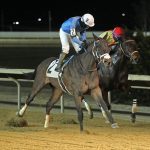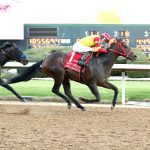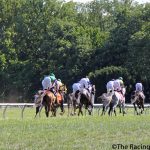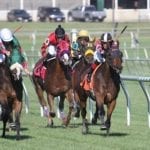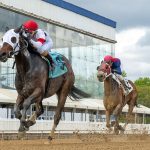FANLESS PREAKNESS? ONE SHOULD BE PLENTY OF THAT
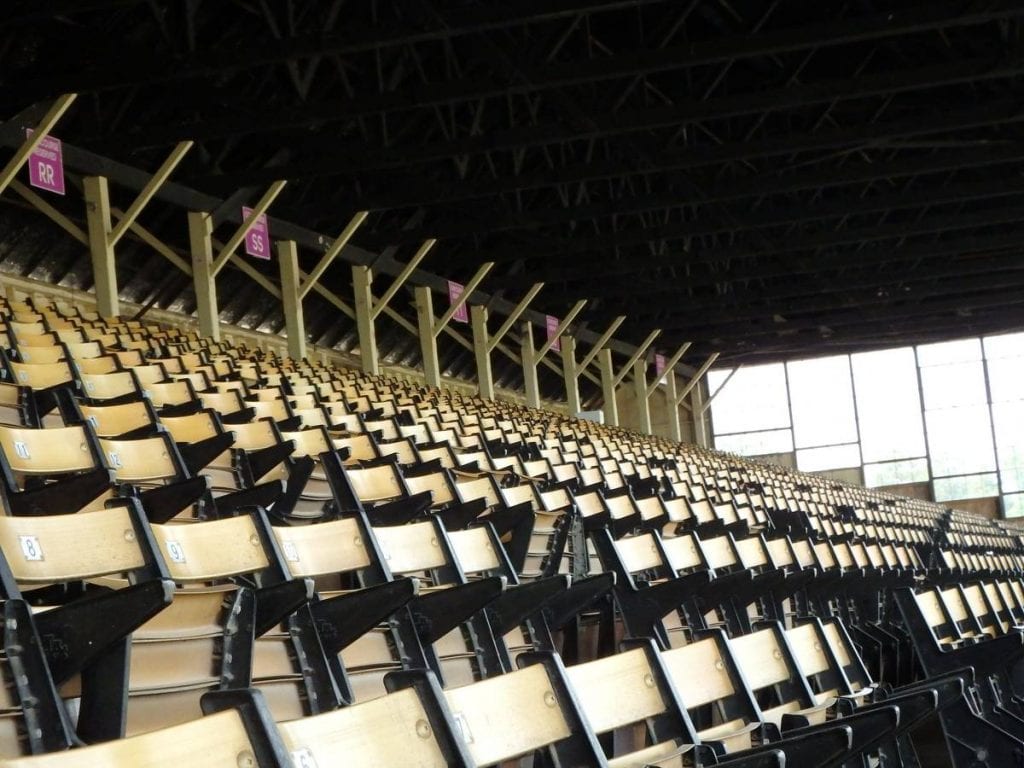
Old Hilltop has seen a lot of things.
It’s seen Triple Crown winners and the most famous match race of all. It’s seen a drunk taking a swing at Artax, and many drunks running over portajohns. It’s hosted the Sport of Kings and the People’s Party. It’s seen fire, and it’s seen rain – literally in both cases.
But it’s never seen the likes of what it will confront this year: a Preakness without fans. Reported attendance: zero, off by just 131,256 from last year.
Blame Covid-19. Also, blame Maryland Gov. Larry Hogan (R), who inexplicably has banned “the general public” from racetracks even while permitting them to go to casinos, simulcast betting facilities, bowling alleys, and, sure, why not, tattoo parlors, among many other places.
To paraphrase a long-ago New York Daily News headline. Hogan to racing fans: Drop dead.
Regardless, the show will go on, even if no one’s on the grounds to see it. The TV audience will enjoy it just fine.
If you’ve been to the races for a mid-winter, midweek card, you might think you have the general idea of what a fanless day at the races is like. That’s what I thought, but, having attended a fanless day at Laurel, that surmise was dead wrong.
Fanless racing has most of the trappings of a normal race day. The horses still take their turns around the paddock and emerge on the racetrack to the strains – often recorded – of the call to post. There’s still a post parade.
- What to watch at Charles Town this weekend
 What’s on tap at Charles Town Races? Here are a handful of races and runners we’ll have our eyes on.
What’s on tap at Charles Town Races? Here are a handful of races and runners we’ll have our eyes on.
But those trappings, in a sense, accentuate the strangeness, the emptiness of the track. What’s a post parade without a fan yelling encouragement to a jockey? What’s a post-race without a bettor telling everyone that he knew the horse was going to win? Or, for that matter, without torn-up tote tickets fluttering to the ground?
If a tree falls in the forest with no one around to hear it, does It make a sound? If a race takes place at any empty racetrack, does it make an impact?
The connections, presumably, will say winning a big race makes plenty of impact, fans or no fans. And the winner’s share of the purse will still spend just as well as if a full grandstand had witnessed it.
Still. Anyone who’s watched fanless professional sports knows that something’s missing. Great athletes performing to the best of their abilities are still great, no question about that.
But sports stripped of their communal element – without people in the stands to root-root-root for the home team – are missing something essential. It’s no accident that the most famous sports song of all, Take Me Out to the Ball Game, is specifically about that element – “take me out with the crowd” – with even the possibility of defeat shrugged off as no more than “a shame.”
In Maryland, those few moments before a normal Preakness are some of the best moments of the year: crowded, chaotic, pregnant with possibility. The energy of 100,000 people, combining in unpredictable ways, anticipation meeting action.
What’ll it feel like on Saturday? That’s anybody’s guess; there’s no template for what it’s like when an event that’s had crowds over 100,000 in all but two of the last 20 years goes without.
- Coal Battle’s West Virginia connection
 Kentucky Derby contender Coal Battle has a couple of big fans in West Virginia, whose connection is through the horse’s WV-bred dam.
Kentucky Derby contender Coal Battle has a couple of big fans in West Virginia, whose connection is through the horse’s WV-bred dam.
It’s clear that something will be lost.
But the good news is that not everything will be lost. The show – strange as it might be – will go on. And in that – in the tradition, a bit battered and bruised this year, but still going forward — there is comfort.
We’re adaptable creatures, we humans, and from the ashes of what looked to be a ruined racing year, we’ve managed to salvage much that matters: the Triple Crown, Saratoga, the Breeders’ Cup, and of course, day-to-day racing all over the country. A fairly remarkable feat, when you think about it.
Not so remarkable, though, that you’d like to repeat it. Here’s hoping that our next spin through the Triple Crown is less battered and more traditional than this one’s been. Old Hilltop will have seen one fanless Preakness, and that should be enough for several lifetimes.
LATEST NEWS


